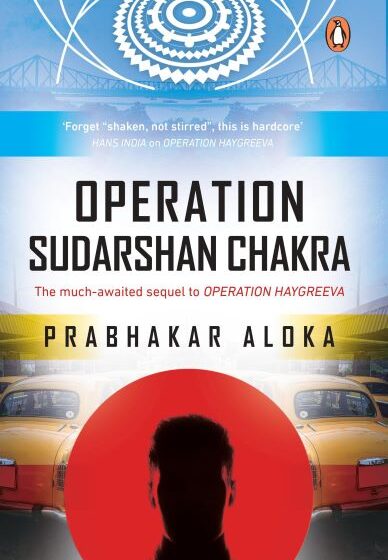Operation Sudarshan Chakra is based on India’s counter-terror operations

Team L&M
Former Intelligence Bureau Officer Prabhakar Aloka (IPS 1986), who had a three-decade stint at Intelligence Bureau, the nation’s premier Intelligence agency has come up with Operation Sudarshan Chakra (Penguin Random House India), a gripping espionage thriller. The book is a sequel to Aloka’s earlier book Operation Haygreeva, and shares an insider’s expert view of India’s counter-terror and counter-insurgency through its protagonist Ravi Kumar and his team of young recruits. It is set to be released tomorrow, June 30.
Following in an extract from Operation Sudarshan Chakra (page 47-49)
Jose projects The Persistence of Memory on the wall.
Ravi walks over to the whiteboard and announces, ‘Let’s start with the basics.’
‘Looks like a bunch of melting clocks to me,’ Jose remarks, ‘possibly meaning to suggest that we’re running out of time.’
‘Fair point,’ Ravi says, even as he writes ‘running out of time’ on the whiteboard, ‘It might very well be one of the things Takshak is trying to tell us, we don’t really need this painting to tell us that we’re running out of time. Think at an even more basic level. Why is it called The Persistence of Memory?’
Jose hazards a guess, ‘Perhaps Takshak is warning about a repeat of something that has happened in the past? Another series of blasts?’
‘There’s only one thing from the past that Takshak could possibly be hinting at. Before we helped him move to Monte Carlo and start a restaurant, Takshak was my most trusted asset
inside the Khalistan movement. He was deeply embedded, and yet nobody ever found out that he was working for us. He still is an influential man with connections extending across the Sikh diaspora.’
Cyrus is surprised, ‘But isn’t the Khalistan movement dead?’
Ravi explains, ‘For all practical purposes, yes. But it’s quite evident that the Khalistani sentiment was never fully extinguished. But we’ve believed for a long time now that they no longer have the muscle to pose a direct threat to national security. Something has clearly changed on that front. Which means there’s something we’re missing here. Think more basic. Why are there three Renaissance paintings, and one surrealist painting, and not the other way round? And why this painting in particular? What’s so special about it?’
‘The thing about this painting, unlike the other three,’ Cyrus explains, ‘is that it is hard to pin down what exactly it is that Dali is trying to say. The surrealists, like Dali, differed significantly from the Renaissance painters at a very fundamental level. As opposed to simply painting one composite scene the way one might take a photograph, they tried deliberately to bring together different realities in unexpected ways.’
‘Different realities coming together in unexpected ways . . . very interesting,’ Ravi says, as he moves away from the whiteboard and stares intently at the image on the wall. A look of recognition flashes across his face, as his eyes land on a particular corner of the frame.
‘Since you seem to know all these things nobody really cares about, tell me,’ Ravi asks Cyrus. ‘Did Dali ever add alphanumeric codes as his paintings?’
‘I can’t be sure, but I highly doubt it,’ Cyrus replies. ‘Then what’s that?’ Ravi asks, pointing at ‘K2’ embossed
in the bottom right corner of the painting.
Ravi walks back to the whiteboard, and thinks aloud, ‘We have “time running out”, The Persistence of Memory, “different realities coming together in unexpected ways”, Khalistan, and now we have K2. It’s quite simple, really. Don’t you see it?’
Cyrus and Jose shake their heads. They don’t see it. ‘Kashmir and Khalistan,’ Ravi announces, as a shiver
runs down his spine, ‘Two different realities, being brought together. The persistence of memory.’

